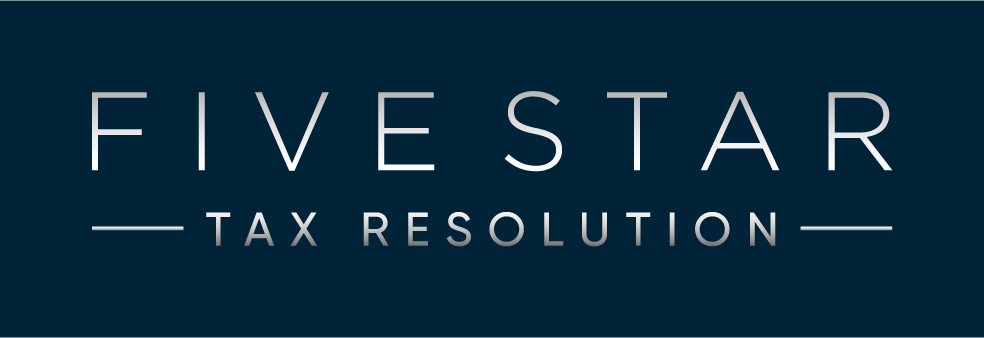The IRS will release your levy/garnishment immediately, once you have entered into simple payment agreements.
See how we can help with a tax levy or garnishment
Having money removed from your bank account or your paycheck by IRS is not entirely new. This is called a ‘levy’, when money is removed from your bank account. A ‘wage garnishment’ is when the IRS or state requires to withhold your paycheck and send it directly to them in order to pay off your unpaid taxes or other balances.
When this happens, there are ways to address it. You can request that the IRS remove the levy by entering into a formal payment agreement or by resolving your outstanding back taxes in full.
Understanding how tax levies apply to you and what you need to do to make the most of this is important. Of course, keeping up with your taxes and other repayments is crucial, but sometimes things make it more challenging to keep up with payments.
An IRS tax levy is a legal action that allows the Internal Revenue Service to seize a taxpayer’s property or assets when taxes remain unpaid after multiple notices. Through a levy, the IRS can collect funds directly from bank accounts, wages, real estate, vehicles, and even retirement income to recover the outstanding balance.
A tax levy is typically a final enforcement step — the IRS generally only issues one after repeated attempts to reach the taxpayer have failed. Before a levy is placed, the IRS must send a Notice of Intent to Levy and provide an opportunity to resolve the issue or enter into a payment agreement.
If you’ve received a levy notice, it’s important to act quickly. Working with an experienced tax relief attorney can help you stop collection activity, negotiate directly with the IRS, and protect your income and property from further enforcement.
There are three requirements that the IRS must meet in full before it can give a levy:

If you’ve received an IRS levy or wage garnishment, it’s possible to have it released once you’ve arranged a payment plan or proven financial hardship. The IRS will typically remove the levy after you’ve met the terms of an approved payment agreement, extension to pay, or special relief program such as an Offer in Compromise or Currently Not Collectible Status.
When a bank levy is issued, your funds are frozen for 21 days before being sent to the IRS. Acting quickly can help protect those funds — our licensed tax professionals can contact the IRS directly, negotiate a streamlined installment agreement, and request that the levy be immediately released or faxed to your employer or bank.
Because the process can be complex and time-sensitive, it’s best to work with an experienced tax attorney or tax relief specialist. Our team can help you determine the fastest route to resolve your case, secure an IRS payment plan, and ensure the levy is fully lifted so you can regain financial control.
Having money removed from your bank account or your paycheck by IRS is not entirely new. This is called a ‘levy’, when money is removed from your bank account. A ‘wage garnishment’ is when the IRS or state requires to withhold your paycheck and send it directly to them in order to pay off your unpaid taxes or other balances.
When this happens, there are ways to address it. You can request that the IRS remove the levy by entering into a formal payment agreement or by resolving your outstanding back taxes in full.
Understanding how tax levies apply to you and what you need to do to make the most of this is important. Of course, keeping up with your taxes and other repayments is crucial, but sometimes things make it more challenging to keep up with payments.
An IRS tax levy is a legal action that allows the Internal Revenue Service to seize a taxpayer’s property or assets when taxes remain unpaid after multiple notices. Through a levy, the IRS can collect funds directly from bank accounts, wages, real estate, vehicles, and even retirement income to recover the outstanding balance.
A tax levy is typically a final enforcement step — the IRS generally only issues one after repeated attempts to reach the taxpayer have failed. Before a levy is placed, the IRS must send a Notice of Intent to Levy and provide an opportunity to resolve the issue or enter into a payment agreement.
If you’ve received a levy notice, it’s important to act quickly. Working with an experienced tax relief attorney can help you stop collection activity, negotiate directly with the IRS, and protect your income and property from further enforcement.
There are three requirements that the IRS must meet in full before it can give a levy:
1. They sent the taxpayer a tax bill (also known as a Notice and Demand for Payment)
2. The taxpayer did not pay their taxes (either could not or would not)
3. The IRS sent the taxpayer notice that they would be issuing a levy 30 days after the letter. This is typically known as a Final Notice of Intent to Levy and Notice of Your Right to A Hearing.
If you’ve received an IRS levy or wage garnishment, it’s possible to have it released once you’ve arranged a payment plan or proven financial hardship. The IRS will typically remove the levy after you’ve met the terms of an approved payment agreement, extension to pay, or special relief program such as an Offer in Compromise or Currently Not Collectible Status.
When a bank levy is issued, your funds are frozen for 21 days before being sent to the IRS. Acting quickly can help protect those funds — our licensed tax professionals can contact the IRS directly, negotiate a streamlined installment agreement, and request that the levy be immediately released or faxed to your employer or bank.
Because the process can be complex and time-sensitive, it’s best to work with an experienced tax attorney or tax relief specialist. Our team can help you determine the fastest route to resolve your case, secure an IRS payment plan, and ensure the levy is fully lifted so you can regain financial control.
Depending on your case, you may qualify for one of the following Fresh Start resolution options:
✔ Offer in Compromise — settle for less than the full amount owed
✔ Penalty Abatement — reduce or remove failure-to-pay penalties
✔ Partial Pay Installment Plan — pay back a portion over time
✔ Hardship Status (Currently Not Collectible) — pause collections
✔ Fresh Start Lien Withdrawal — remove IRS filing from public record
Q: How long does approval take?
A: Most cases receive a decision within 3–6 months depending on IRS backlog.
Q: Can I still qualify if I haven’t filed past returns?
A: Yes — as long as missing returns are filed as part of the application process.
Q: What if I already have a lien or wage garnishment?
A: The Fresh Start Program can help stop—and in some cases reverse—those actions.

Our primary goal is to empower small business owners and individuals with financial services.
© Five Star Tax Resolution. All Rights Reserved. Copyright 2024 | Privacy Policy | Do Not Sell My Information | Pursuant to Section 1798.120 of the California Consumer Privacy Act (CCPA), a consumer shall have the right, at any time, to direct a business that sells personal information about the consumer to third parties not to sell the consumer’s personal information. If you would like to exercise this right, please click the following link: Do Not Sell My Personal Information